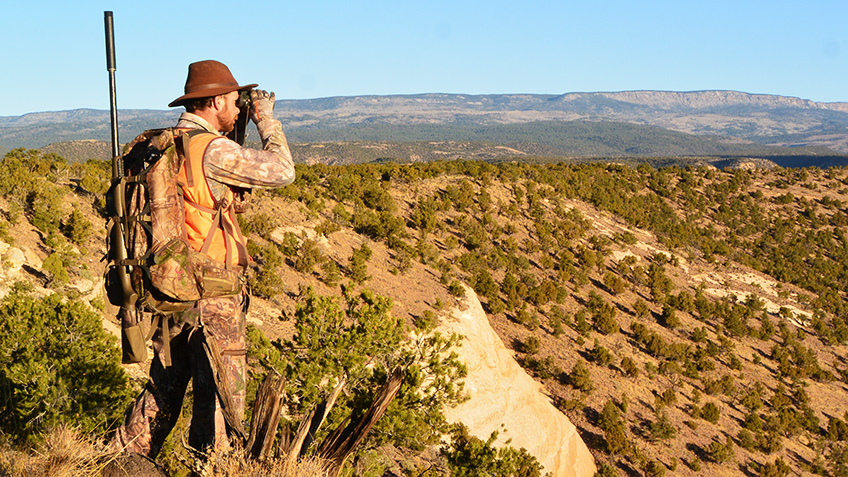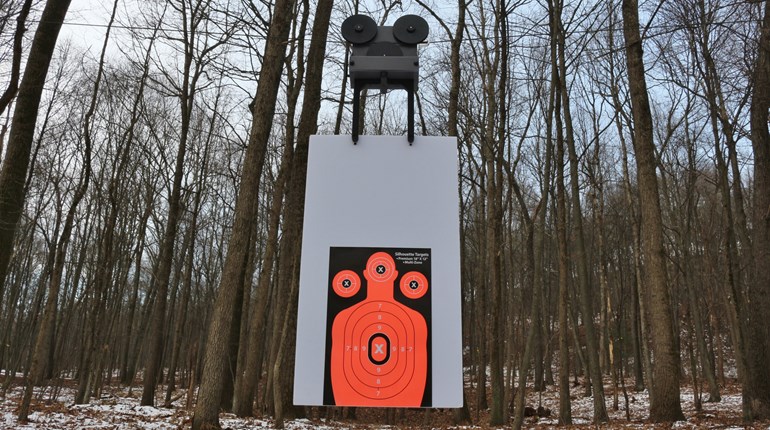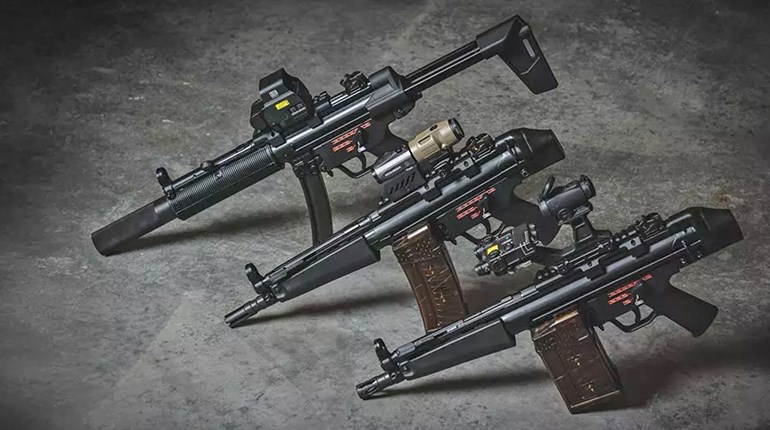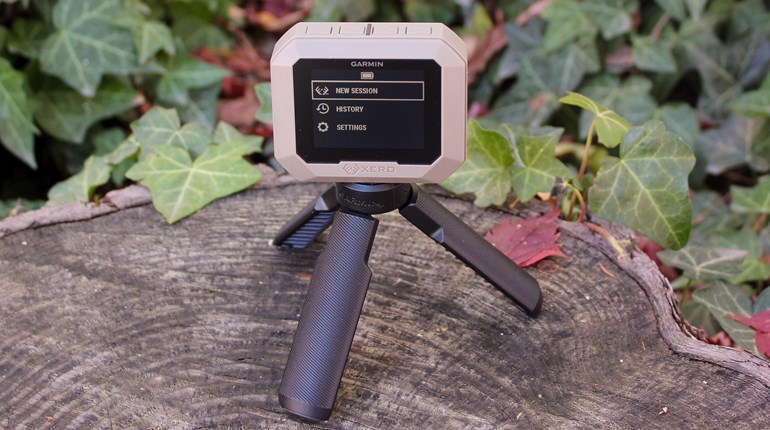
Dust puffed from underfoot, whisked away by the same crosswind that nodded yellow short-grass prairie flowers and tilted the dancing mirage. My buddy and I crept along on hands and knees, shielded by a large but very thin cow decoy. Far ahead a pronghorn buck studied our progress, trying to decide if this odd-looking cow might have an effect on his day.
I was hunting prairie goats on northwestern New Mexico’s plains; the only cover within miles a 10-inch carpet of flowers. We had been working for hours to close within ethical shooting range of a nice buck, but the stiff crosswind and a herd of female pronghorn bodyguards made our task a challenging one. I had an ace in the hole, however, and when the buck offered a 486-yard shot, I bellied down amongst the flowers, implemented the 1.5-minute wind hold advised by my spotter, and killed the buck dead with one shot. What was my ace in the hole? Long range skill and equipment.

Is Long-Range Hunting Ethical?
It’s a hotly debated question, and one that has many and varied answers. There cannot be a simple one-size-fits-all, yes or no answer. I think the right answer is, “Yes, under the right circumstances.” But before I address those circumstances, let me illustrate the ugly side of the long-range hunting coin with another pronghorn hunting story.
I followed along with an older gentleman and his guide as they searched for a buck. Two were spotted together and the old fellow found a solid rest atop the hood of the truck and pulled the trigger. The distance was 860 yards. To his credit, he made a first-round hit, but that’s where the credit stopped. The hit was marginal and his guide called for a follow-up shot, which the old fellow executed. There were four of us watching through optics, but none of us saw any sign of the bullet. The guide instructed the hunter to shoot again. Same thing; no evidence whatsoever. Then it hit me like a wave of cold water, and I swung my glass to check on the second pronghorn. Sure enough there he was, struggling across the prairie with his entrails dragging on the ground. The old fellow had mistakenly shot at the second buck with both of his follow-up shots, gut-shooting it in the process. The distance had been too far and the communication insufficient, resulting in a gory mess that took hours to sort out.
What It Takes to Hunt Long Range Right
Here’s the thing: shooting (hunting) long range is not a thing where you gloriously charge, carry the battle up the mountainside and hoist your flag at the top. Rather, you’ve got to systematically accrue the right skills and gear for the task. Then you make like a general overlooking a field of battle, run calculations and statistics, and finally make your move. A deliberate, cucumber-cool mindset is essential. Starting with the gear and then moving into knowledge and skill, here’s how to put it all together.
The Gear
• Rifle: Your rifle needs to group into one MOA (or inch) or less at 100 yards every time. A rifle that averages .5 MOA is better. Furthermore, it must fit you, and the stock must be designed correctly to enable you to spot your own hits. A clean, crisp trigger is essential. I’d recommend one of Browning’s long-range rifles if you’re looking for something affordable, and a Gunwerks rifle if you want the best of the best.

• Scope: You’ll need a quality riflescope with an adjustable turret complete with a zero-stop type mechanism. This turret must dial accurately and repeatably, and be good enough quality to endure thousands of dial cycles. A lightweight model is really nice when you’re schlepping up steep mountainsides. Vortex builds awesome affordable scopes, with Zeiss, Swarovski, Leica, Nightforce and Leupold building the upper-echelon glass. My current favorite hunting riflescope is a Leupold VX-6HD.
• Rangefinder: A rangefinder should be capable of ranging out to at least 1,000 yards on non-reflective, deer-sized targets. My favorites are ergonomic and incorporate ballistic and environmental capability. In other words, you can enter your specific ballistics, and whenever you use the rangefinder it will measure local temperature, elevation, pressure, shot angle, and more. Then it adds everything together and provides a ballistic solution or “come up.” The model I’m currently using is Zeiss’s 10X42 Victory RF binocular.

• Ballistic Calculator: There are several good ballistic apps available on your smartphone for little to nothing. Two of my favorites are Ballistic AE (available from the Apple app store for around $10) and Hornady’s 4DOF, which is free. I also use Zeiss’s hunting app in conjunction with my Victory RF.
• Bipod: A solid but lightweight bipod is the steadiest prone-position field rest out there. Cheap ones are available, but this is one area I recommend getting only the best, like an Atlas or a Spartan bipod system.
• Kestrel Wind Meter: A Kestrel will give you a precise wind-speed reading at your position, enabling to make better estimations at the target and in between. Furthermore, your Kestrel can provide atmospherics like temperature, elevation, and pressure.
• Spotting Scope and Tripod: It’s never ethical to take long shots on game without someone watching through a spotting scope. Your spotter will need a good-quality tripod-mounted scope with which to read wind, spot hits and call corrections. Leupold makes a great little budget-priced spotter, while Swarovski builds the Lamborghini of the spotting world. I like a lightweight tripod from either Outdoorsmans or Leupold.
As you can see, getting started in long-range shooting can be costly. The most basic gear will cost you in the neighborhood of around $4,000. A good setup will cost you upwards of $15,000.

The Skill
Unlike the equipment listed above, skill cannot be bought; it must be earned. Without skill you can never hunt at long range ethically. Earning the necessary skills will take time, study and hundreds if not thousands of rounds sent downrange at long-distance targets. Here is a basic synopsis of the skills you will need, and how to use them:
• Knowledge: You must learn about projectile (bullet) characteristics such as ballistic coefficient (BC), velocity and terminal performance. You’ve got to know how to enter ballistic data into your calculator and develop a solution. You need to understand your scope: the stadia marks in its reticle, how the turret works and how to re-set the zero stop. You must understand trajectory and how minutes of angle or mils work. It’s not rocket science, though it can be overwhelming at first. Take your time, study good information and you’ll figure it out.
• Ranging: A 25-yard error at 750 yards can send your bullet ten inches or more off target—enough to shoot clear over or under a mule deer. Learn to range your target several times, and range objects immediately in front of and behind your target to verify distance. Only once you are sure of the exact distance should you dial for the shot.

• Reading Wind: This is the hardest skill of all to master. You’ve got to learn to estimate wind value at your shooting position, at the target and halfway in-between. You need to be able to recognize anomalies that might affect the wind and its influence on your bullet’s path, like saddles in ridges (that might conduct a strong wind current), terrain that might influence an updraft (that could create aerodynamic jump) and more. Bottom line? Don’t shoot long in very windy conditions.
• Shooting Position: You must learn correct shooting position and practice it until it becomes muscle memory. That way when the pressure is on, you’ll fall naturally into position, setting yourself up to make a good shot. A good long-range shooting class can help you master correct position. Once you’ve got a handle on position, you should practice in a variety of settings so that you’re comfortable on angled, rocky or uneven terrain.

• Communication: Good instructions and windage calls from your spotter are essential to making a good shot, and to making accurate follow-up shots. Develop and practice the verbiage you will use while hunting and shooting so that your spotter’s instructions will be crystal clear during the moment of truth. Note: Becoming a good spotter requires even more skill than becoming a good shooter. Accept every opportunity to spot for other shooters, as this will teach you about bullet flight and how to read wind, help you communicate better and will aid your quest to become a better shot.
• Shot Placement: All the experts agree—the only good long-range shot on an animal is broadside. A bit of quartering to or away angle is okay, so long as it’s not severe. The best long-range hunters I know like the shoulder shot; slightly above center in the middle of the shoulder. It tends to take out lungs, shoulder blades and the bottom of the spine. Animals drop on the spot.

• Shot Execution: This is the moment you’ve worked so hard for; don’t mess it up. Develop the skill to press the trigger, follow through (don’t flick the booger with your trigger finger, hold steady and motionless for a second or so immediately after the trigger breaks the shot), and spot your impact. Once you can do that, you’re almost home.
• Follow-Up Shot: Immediately after your follow-through is complete, stay on target and cycle the bolt in case a follow-up shot is necessary. Your spotter should be able to tell you where you hit and give you a correction for your next shot if necessary. Practice shooting and then executing a follow-up shot until it becomes second nature.
• Spindrift and Coriolis Effect: Here’s where the doctorate degree starts. Beyond about 700 yards, your shot becomes significantly influenced by seriously techy stuff. Spindrift (your projectile veering because of bullet spin rate) and Coriolis (how the earth’s spin affects your point of impact) are just two of many influential elements. If you want to shoot ethically and effectively at truly long ranges, you’ll need to study for a doctorate.

Test Yourself
It should be obvious by now that you’ll be required to invest a lot of time and money to become ethically qualified to shoot long-range at game. Don’t be fooled into believing you can take shortcuts, or you’ll end up like the old man in the beginning of this article: covered in theoretical gore and facing an irate game warden.
Take the time, invest in the gear, learn the skills and then test yourself. My favorite method is to use a steel plate the same size as the vitals on whatever I’m getting ready to hunt; say a 10-inch plate for mule deer, whitetails, black bear and pronghorn, or a 15-inch plate for elk and moose. If you can hit the plate every time at 700 yards, you can be confident taking a shot at that distance. If not, keep practicing those skills until you can, but for now, restrict your shots to a distance you know you can make a first-round hit, every time.

Read the Situation Before Taking the Shot
I intentionally left this subject for last. You must learn to manage the situation, including your own desire to pull the trigger, with complete control. Learn to read the animal before you shoot: is it calm and likely to remain stationary long enough for your bullet to get there, or is it fidgety and likely to move before your bullet impacts? Is the wind simply too erratic or too strong to make a good shot? Are you calm and steady behind the crosshairs? If the answer to any question is not right, don’t pull the trigger. A truly skilled long-range hunter knows when to take the shot and when to pass and take steps to create a better opportunity.





































